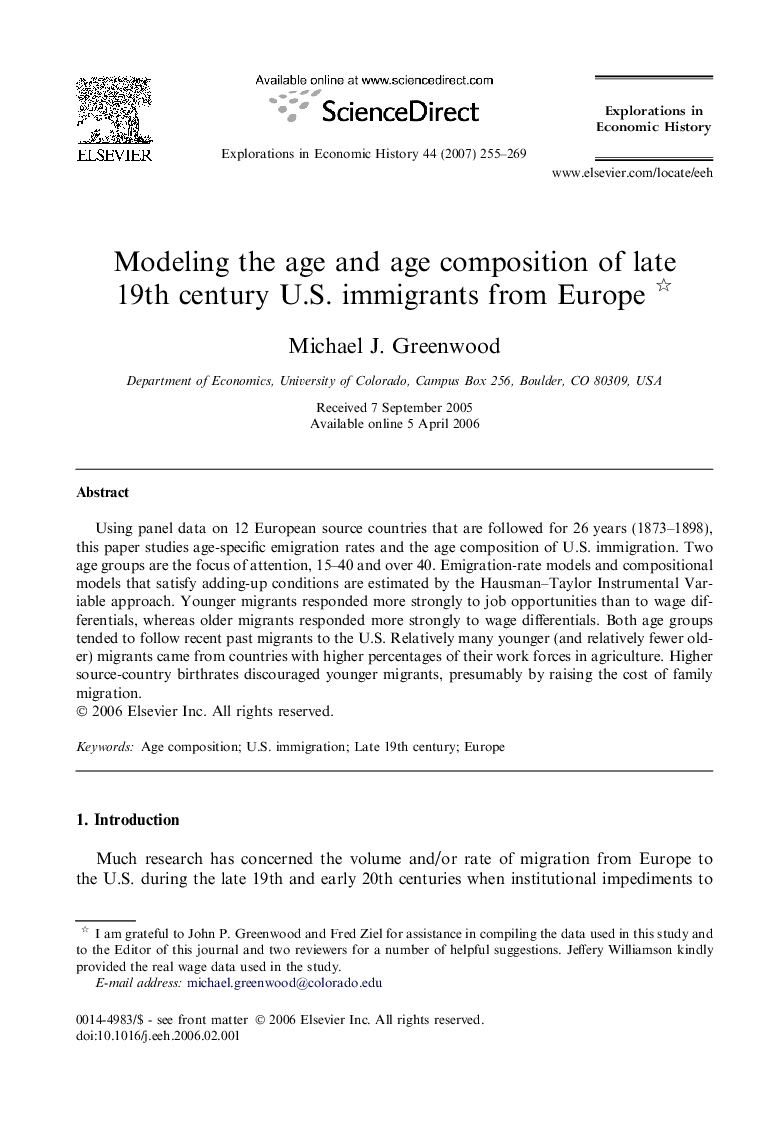| Article ID | Journal | Published Year | Pages | File Type |
|---|---|---|---|---|
| 5069085 | Explorations in Economic History | 2007 | 15 Pages |
Using panel data on 12 European source countries that are followed for 26 years (1873-1898), this paper studies age-specific emigration rates and the age composition of U.S. immigration. Two age groups are the focus of attention, 15-40 and over 40. Emigration-rate models and compositional models that satisfy adding-up conditions are estimated by the Hausman-Taylor Instrumental Variable approach. Younger migrants responded more strongly to job opportunities than to wage differentials, whereas older migrants responded more strongly to wage differentials. Both age groups tended to follow recent past migrants to the U.S. Relatively many younger (and relatively fewer older) migrants came from countries with higher percentages of their work forces in agriculture. Higher source-country birthrates discouraged younger migrants, presumably by raising the cost of family migration.
